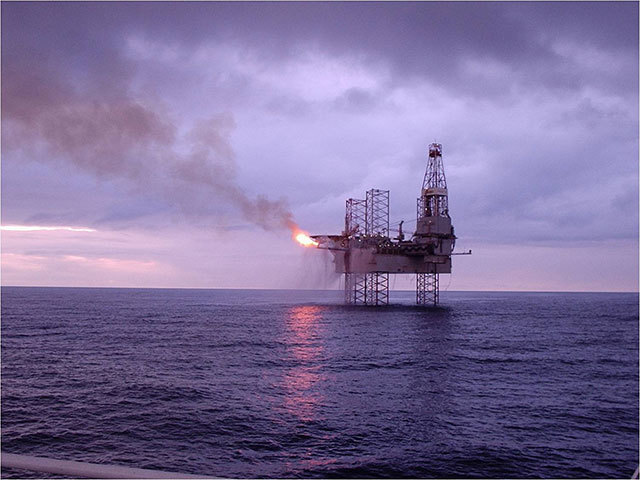
Oil producers outside OPEC and US shale fields are getting caught in the confrontation over market supremacy that has brought crude prices to near six-year lows.
High-cost regions from aging North Sea fields to untapped resources in East Siberia and deep-water projects off Latin America will suffer the most from the clash, say Standard Chartered Plc, Citigroup Inc. and BNP Paribas SA.
The Organization of Petroleum Exporting Countries refused to cut output in November to eliminate a surplus caused in large part by US production at a three-decade high, leaving more expensive operators to reduce supply. International oil companies including Royal Dutch Shell Plc and Chevron Corp. have announced more than $40billion in spending cuts since early November.
“What’s going to tighten the market for next year and the year after will be the longer-lasting damage done to the rest of non-OPEC,” Paul Horsnell, an analyst at Standard Chartered in London, said by phone.
Oil production from non-OPEC nations grew by 2 million barrels a day last year, with about 75 percent of the new supply coming from the US, according to the International Energy Agency, a Paris-based adviser to 29 nations.
A supply surplus of about 1.5 million barrels of oil is pumped into the market daily, OPEC Secretary-General Abdalla El- Badri said Jan. 26. Brent crude, the global benchmark, fell for seven straight months, the longest slump on record, to the lowest level since March 2009. Futures for March settlement traded at $56.63 a barrel at 8:02 a.m. on Wednesday, down 51 percent since June, on the London-based ICE Futures Europe exchange.
US shale-oil drillers have been among the first to respond to lower prices. They cut rigs targeting US oil by a record 435 to 1,140 in the nine weeks ended Feb. 6, according to Baker Hughes Inc. That’s the lowest total since December 2011 as explorers slow efforts in the Permian Basin in Texas and North Dakota’s Bakken formation.
Yet the US will still contribute the most of any country to the expansion of global oil supplies this decade, with the current slowdown marking a pause, not an end to the boom, the IEA said in a report Tuesday. Drilling from hard-to-penetrate rock formations including shale will still add about 1.6 million barrels a day to global markets by 2020, it said.
“Everyone is looking at the US, at when the lower US rig count is going to feed through into lower production,” said Seth Kleinman, head of European energy research at Citigroup Inc. in London. “But probably the biggest impact on supply is going to come from” maintenance reductions in other parts of the world, he said.
Chevron lowered its 2015 capital-spending target, the majority of which is dedicated to supporting existing production, by 13% to $35billion on Jan. 31. BP expects to cut spending to $20billion this year, compared with previous guidance of $24billion to $26billion.
Lower spending on maintenance of existing oil fields can accelerate the decline in production by 1 or 2%, Kleinman said. Add this up across all the affected regions and “you’re talking about losing a million barrels of oil in 12 months.” That’s roughly equal to the global supply surplus, he said.
“Russia, facing a perfect storm of collapsing prices, international sanctions and currency depreciation, will likely emerge as the industry’s top loser,” the IEA said in the report Tuesday. Its production will fall by 500,000 barrels a day to 10.4 million in 2020, the biggest drop of any nation, the agency said.
Projects in the North Sea, Latin America and Canadian oil sands require oil prices above $60 a barrel, according to Energy Aspects Ltd., a consulting company based in London.
The North Sea is under a lot of stress, with current prices potentially shortening the economic lifespan of oil fields and affecting how soon they will be decommissioned, BP chief executive officer Bob Dudley said in an interview with Bloomberg Television Feb. 3.
Brazil’s oil supply growth will dwindle to below 100,000 barrels a day this year, less than half the rate of 2014, Energy Aspects estimates. The country’s deep-water offshore projects require an oil price of more than $80 a barrel to cover costs, according to BNP Paribas.
When oil prices eventually recover, shale producers will bounce back first because they need to spend less money upfront and can move more quickly from starting drilling to receiving production, said Harry Tchilinguirian, head of commodity markets strategy at BNP Paribas. Offshore fields or oil sands projects, which have high upfront capital costs and can’t scale up so rapidly, will suffer more, he said.
“Unlike US shale, conventional production elsewhere has high upfront capital costs, is slow to start up and will be the main victim of OPEC’s decision to keep output steady,” he said.
Recommended for you
